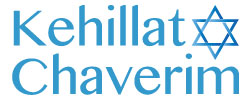Shabbat Succot 5780 – Joy and the Torah
My grandfather (may he rest in peace) was named Simcha Natan in Hebrew. Simcha, meaning joy is the word I most associate with this time of year. Each day of Sukkot in a traditional synagogue, you will see the hakafot, where the congregants dance around the building with the lulav and etrog in hand; seven times we march around the with the joy associated with the fall Harvest. And it doesn’t end there… The last day of Sukkot is designated as Simchat Torah, the day of celebrating the joy of Torah, where we dance and sing and celebrate the end of the reading of the Torah, only to begin again.
So why now? Why Sukkoth? According to Rabi Irving Greenberg, “Sukkot comes just four days after Yom Kippur, the most ascetic, self-denying, guilt-ridden, awesome holy day of the Jewish year… only those who know the fragility of life can truly appreciate the full preciousness of every moment. The release from Yom Kippur leads to the extraordinary outburst of life that is Sukkot. On this holiday, Jews are commanded to eat, drink, be happy, dance, and relish life to the fullest in celebrating the harvest and personal wealth.
But making joy holy means being selective in the enjoyment of God’s gifts, not worshiping those gifts or those who own them. The first and foremost expression of this insight is to share the bounty and the joy. Gifts from the harvest were given to the poor: “You shall rejoice before the Lord. You, your son and daughter, manservant and maid, the Levite… the stranger, the orphan, the widow in your midst” (Deuteronomy 16:11).”
In a wonderful video https://schechter.edu/popular-holiday-soviet-union/ Rabbi Dr. David Frankel, senior lecturer in Bible at Schechter, describes a fascinating piece of Soviet Jewish history and how Simchat Torah became the holiday selected by the Soviet Jews to express their Jewishness. He gives five reasons why:
- Simchat Torah is a holiday of joy (it’s right there in the name) and the Jews wanted to express their joy of being Jewish
- Simchat Torah celebrates Jewish knowledge and learning and they Jews of the Soviet Union wanted to express their right to study Jewish books and learn Torah.
- Simchat Torah expresses eternity, by ending the Torah and beginning again, it creates a never-ending cycle from the point of entering Eretz Yisroel and starting again in the Garden of Eden.
- Simchat Torah is not a biblical holiday. It was not created by the authorities or by those who codified the law. It was created for the people, by the people.
- On Simchat Torah, Every Jew gets called to the Torah, expressing the egalitarian spirit, regardless of level of observance or knowledge. This holiday is about Jewish peoplehood. Thus, the Jews of the Soviet Union took the Torahs into the street in defiance of the Soviet Regime.
There is something unique about the relationship of the Jews and Torah, the way we stand in its presence as if it were a king and dance with it as if it were a bride, listen to it telling our story and study it for the length of our days.
On these days of Sukkoth and Simchat Torah, I love to revel in the dichotomy of how Judaism appreciates both the old and the new. We celebrate the ancient traditions of eating in the Sukkah, dancing with branches and fruits, dancing in a circle with the Torah. On the other hand, we read and study the annual cycles of the Torah portions and how their lessons can be applied to our daily lives.
It is no coincidence that Sukkot has a deep connection with universal humanity. We invite the stranger (Ushpizin) into our Sukkah and share our food with our neighbors and our friends (if you haven’t seen the movie by this name, find it and watch it—it’s a gem). Acts of Gimilut Chasidim (loving-kindness) are the foundations of the world because they are fundamental expressions of human solidarity and human contact in a largely impersonal world.
There is then the significance of the dance on Simchat Torah, where the hierarchies of our differences are transcended and we all dance in a circle around the Torah, representing the Divine center.
According to Lord Rabbi Jonathan Sacks, “what non-Jews (and sometimes Jews) fail to appreciate is how, in Judaism, Torah represents law as love and love as law. Torah is not just ‘revealed legislation’ it represents G-d’s faith in our ancestors that He entrusted them with the creation of a society that would become a home for His presence no matter where we are, and an example to the world.”
On this Shabbat between Sukkoth and Simchat Torah, I hope that we can continue to express the joy that led King David to ‘leap and dance’ when the ark was brought into Jerusalem and that as we experience these days of Sukkot, Hashanah Rabbah and Simchat Torah renew our love of the Torah as we begin again.
Shabbat Shalom
(1993) Rabbi Irving Greenberg, The Jewish Way: Living the Holidays, Touchstone
(2014) Rabbi Tracy Nathan, Dancing in circles from Sukkot to Simchat Torah, https://www.stljewishlight.com/opinion/dvar_torah/dancing-in-circles-from-sukkot-to-simchat-torah/article_51ba9e78-4f11-11e4-bb84-4718d0937faa.html
(2015) Rabbi Jonathan Sacks, Law as Love http://rabbisacks.org/law-as-love-bemidbar-5775/
(2017) Rabbi Dr. David Frankel, The Most Popular Holiday in the Soviet Union? https://schechter.edu/popular-holiday-soviet-union/

